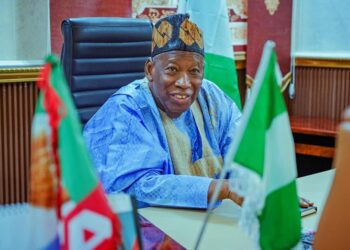In celebration of the 2021 World Humanitarian Day, the federal government has formulated the National Humanitarian Development Peace Framework; in order to reduce vulnerabilities, support and promote peace and stability in Nigeria.
Speaking Thursday at the Presidential Villa, Abuja, the Minister of Humanitarian Affairs, Disaster Management and Social Development, Hajiya Sadiya Umar Farouq, said that the framework, which was developed by the National Humanitarian Coordination Technical Group, under the directive of the National Humanitarian Coordination Committee of the Ministry, will provide a more integrated, effective and efficient methodology for the aid sector to support the development and peace objectives of Nigeria.
She said: “This framework is a multi-track, multi-agency and multi-stakeholder approach that involves the active and meaningful commitment of relevant stakeholders. Because humanitarian, development and peace needs are not sequential, fundamental challenges remain in the coordination and implementation of aid sector.
“The National Humanitarian-Development-Peace Framework answers the coherence question and envisions stronger collaboration and coordination among actors from the fields of development cooperation, humanitarian action and peacebuilding. Considering the gaps we face due to different programming goals and mandates, this framework will provide a more integrated, effective and efficient methodology for the aid sector to support the development and peace objectives of Nigeria.
“The strategic intent of the framework is to reduce vulnerabilities and support and promote peace and stability in Nigeria. It must be understood that vulnerability is not innate, it varies over time meaning that it can be reduced through strategic planning and preparation, as well as through equitable policymaking and investment. Thus, it is critical that vulnerable populations be regularly engaged and that they inform all our strategic planning. This modus operandi ensures government hears and acts on the perspectives of how individuals or communities can improve their outcomes in the event of any emergency.
“The National Humanitarian Development Peace Framework has been developed to counter specific risks through 7 goals, all of which contain set objectives, strategic approaches and actions.”
She added: “This goal tackles the specific socio-economic and development needs of communities in the country. When living standards are improved, members have vested interest in nation building, and are less susceptible to criminal activities or open to recruitment into terror groups. Improving individual and community living standards creates an enabling environment for social cohesion, national pride and sustainable development.
“Climate and health related disasters require both short and long term thinking and action, local and global perspectives and the ability of government to work with critical stakeholders to adapt strategies that aid citizens to safely navigate their changing environment. This goal emphasizes prevention and preparedness as a critical foundation for disaster management and supports a proactive national coordinated response.
“During conflict or natural disasters, affected communities often lose homes, sources of livelihoods and reduced or no access to social services. Humanitarian response provides essential life-saving assistance to persons of concern to improve their living conditions so they can transition to long-term recovery. This goal ensures responses are not only timely but wholly beneficial to the persons of concern.
“Hence, the NHCTWG will immediately commence its monthly convening to cater to critical humanitarian issues. I reiterate that effective coordination and coherence amongst all relevant actors in the aid sector is needed for the successful implementation of this framework.
“This is not a time to work in silos, but a time to combine efforts and utilize existing structures and available resources to address the underlying root causes of vulnerability, in order to strengthen and promote resilience, peace and stability. I therefore call on all aid sector stakeholders to work closely with the Ministry to create an implementing strategy for the National Humanitarian Development Peace Framework.”




